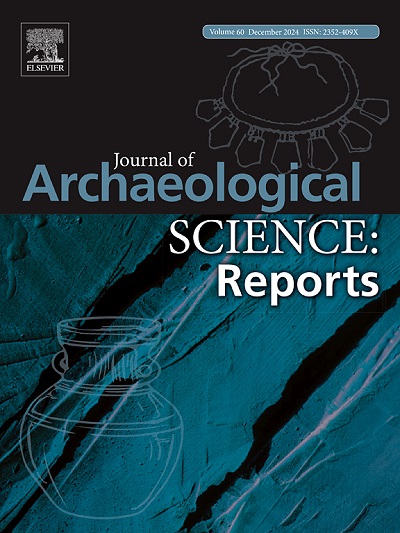Behind the mask − Archaeometric analysis of four gilded Romano-Egyptian mummy masks from the Ny Carlsberg Glyptotek, Copenhagen
IF 1.5
2区 历史学
0 ARCHAEOLOGY
引用次数: 0
Abstract
This study investigates the materials and production techniques involved in the creation of four gilded mummy masks from Ptolemaic and Roman Egypt from the collections of the Ny Carlsberg Glyptotek, Copenhagen. These masks, dating from the 1st century BCE to the 2nd century CE, are an example of the dual existence of a traditional Egyptian style and newly introduced Roman stylistic elements in funerary art. Various analytical methods, including imaging, FTIR, SEM-EDS, and palaeoproteomic analysis, were employed to identify and examine the composition of the materials. The main constructive material for the masks is plaster made of gypsum and calcite. Red and yellow ochre were used for the preparation layers for the gilding, which was made with silver-containing gold leaf. Four masks is not representative of major developments in gilding techniques, but the study does reveal information about the materials and production techniques available in Roman Egypt.
求助全文
约1分钟内获得全文
求助全文
来源期刊

Journal of Archaeological Science-Reports
ARCHAEOLOGY-
CiteScore
3.10
自引率
12.50%
发文量
405
期刊介绍:
Journal of Archaeological Science: Reports is aimed at archaeologists and scientists engaged with the application of scientific techniques and methodologies to all areas of archaeology. The journal focuses on the results of the application of scientific methods to archaeological problems and debates. It will provide a forum for reviews and scientific debate of issues in scientific archaeology and their impact in the wider subject. Journal of Archaeological Science: Reports will publish papers of excellent archaeological science, with regional or wider interest. This will include case studies, reviews and short papers where an established scientific technique sheds light on archaeological questions and debates.
 求助内容:
求助内容: 应助结果提醒方式:
应助结果提醒方式:


